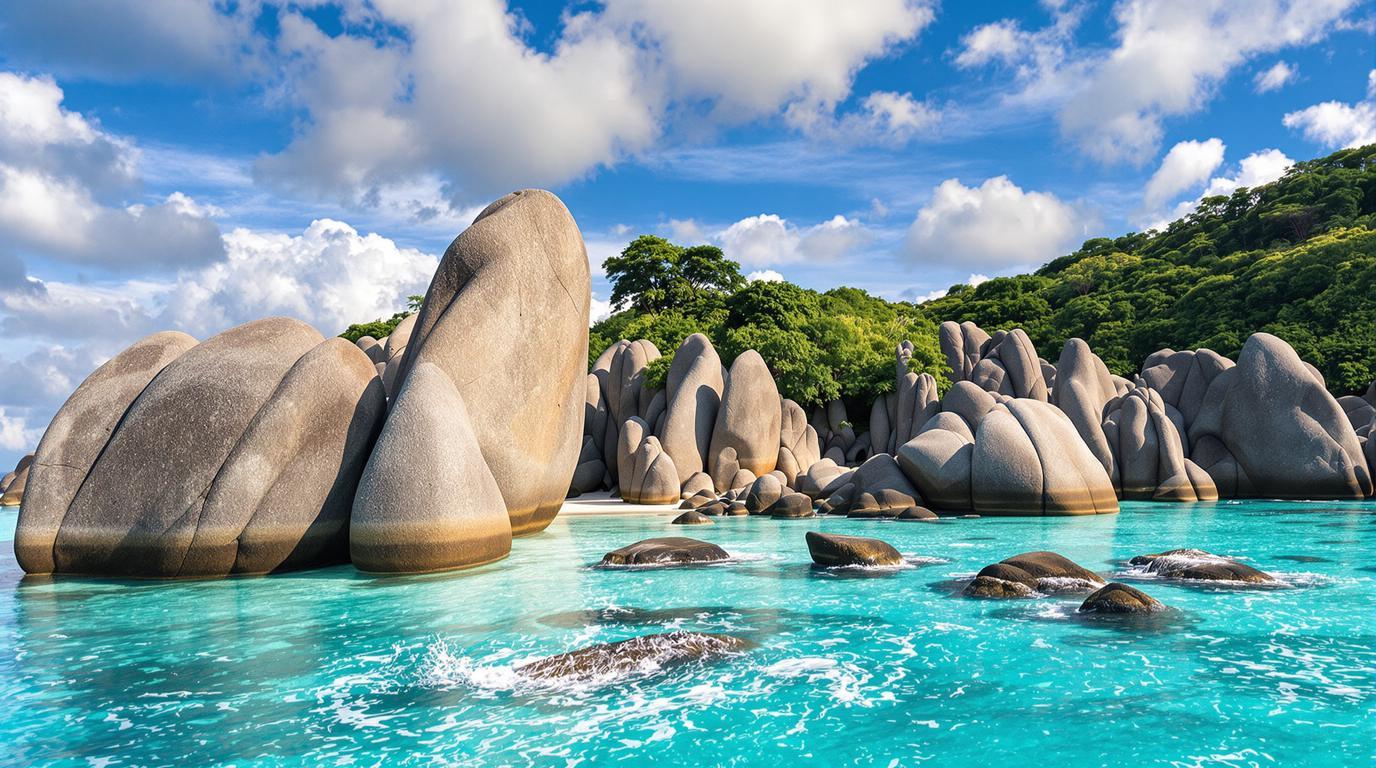The shallow turquoise waters shimmer as they lap against sun-bleached granite boulders, their warm embrace a stark contrast to the wild, unspoiled shoreline that stretches before me. Grand Anse on La Digue isn’t just another postcard-perfect Seychelles beach—it’s nature’s defiant masterpiece, where the Indian Ocean crashes against an island that refuses to surrender to mass tourism. Unlike its Instagram-famous neighbor Anse Source d’Argent, this windswept paradise demands you earn its rewards.
Where wild shores whisper centuries-old island secrets
Grand Anse stretches along La Digue’s eastern coast like an open secret, its golden-white sands accessible only by a 20-minute bicycle journey through dense tropical forest. “Our ancestors chose the sheltered western beaches for fishing villages,” explains Marcel, a fourth-generation La Digue resident. “These eastern shores were always for dreamers and wanderers.”
The name “Grand Anse” appears on three different Seychelles islands, but La Digue’s version stands apart for its dramatic isolation and primeval beauty. While cruise ships dock at Mahé and luxury resorts populate Praslin, this stretch of coastline remains refreshingly uncomplicated—much like this hidden Seychelles cove that requires a 15-minute trek yet delivers even greater seclusion.
Three treasures hidden beyond the tourist maps
The granite path to Petite Anse’s turquoise sanctuary
Just beyond Grand Anse’s southern edge, a narrow path winds between massive granite sentinels leading to Petite Anse. The five-minute scramble deters casual beachgoers, ensuring you’ll often have this smaller cove to yourself. Early mornings reveal tiny hermit crabs creating mesmerizing patterns in the sand while frigatebirds glide overhead, their distinctive silhouettes perfect against the dawn sky.
The abandoned plantation’s secret viewpoint
Inland from Grand Anse’s northern edge, a barely visible trail climbs through vanilla vines and cinnamon trees to the ruins of a French colonial outpost. The crumbling stone foundation now serves as nature’s viewing platform, offering panoramic vistas across the beach and neighboring islands. Bring water and wear proper shoes—this 30-minute detour rewards photographers with compositions rivaling those from this ancient mountain above Cape Town, though on a more intimate scale.
Tasting traditions that survive beyond tourist menus
The bicycle journey back to La Digue’s western shore provides the perfect opportunity to stop at Chez Jules, an unassuming roadside kitchen where three generations of women prepare authentic Creole octopus curry. The secret lies in their homemade bilimbi fruit paste, lending a tangy brightness that cuts through the rich coconut base.
“We don’t change recipes for visitors,” Jules’ daughter Marie confides as she stirs a worn copper pot. “The ocean gives us what we need, just as it always has.” This unyielding commitment to culinary heritage mirrors what you’ll find on this Caribbean island with just 2,100 residents where traditions endure despite modern pressures.
Navigating La Digue’s wild side with island wisdom
Timing your Grand Anse adventure
Visit between May and September when consistent trade winds create dramatic wave displays against the granite outcroppings. Swimming remains dangerous year-round due to powerful currents, but the visual spectacle reaches its peak during these months. For photographers, the golden hour before sunset bathes the entire landscape in ethereal light.
Transportation essentials
Rent bicycles (150 SCR/day) from La Passe upon arriving by ferry. The journey to Grand Anse takes approximately 25 minutes, with several moderate hills. Electric bikes are available for less confident cyclists at 350 SCR/day. Bring at least two liters of water per person—no reliable facilities exist at the beach itself.
Finding yourself where two worlds collide
As I pedal away from Grand Anse, salt drying on my skin, I understand why this shore remains special. In a world where paradise increasingly means infinity pools and butler service, there’s profound magic in places that remain gloriously, stubbornly wild. Grand Anse doesn’t compromise—it simply exists, as it has for millennia, waiting for those willing to venture beyond the obvious.
